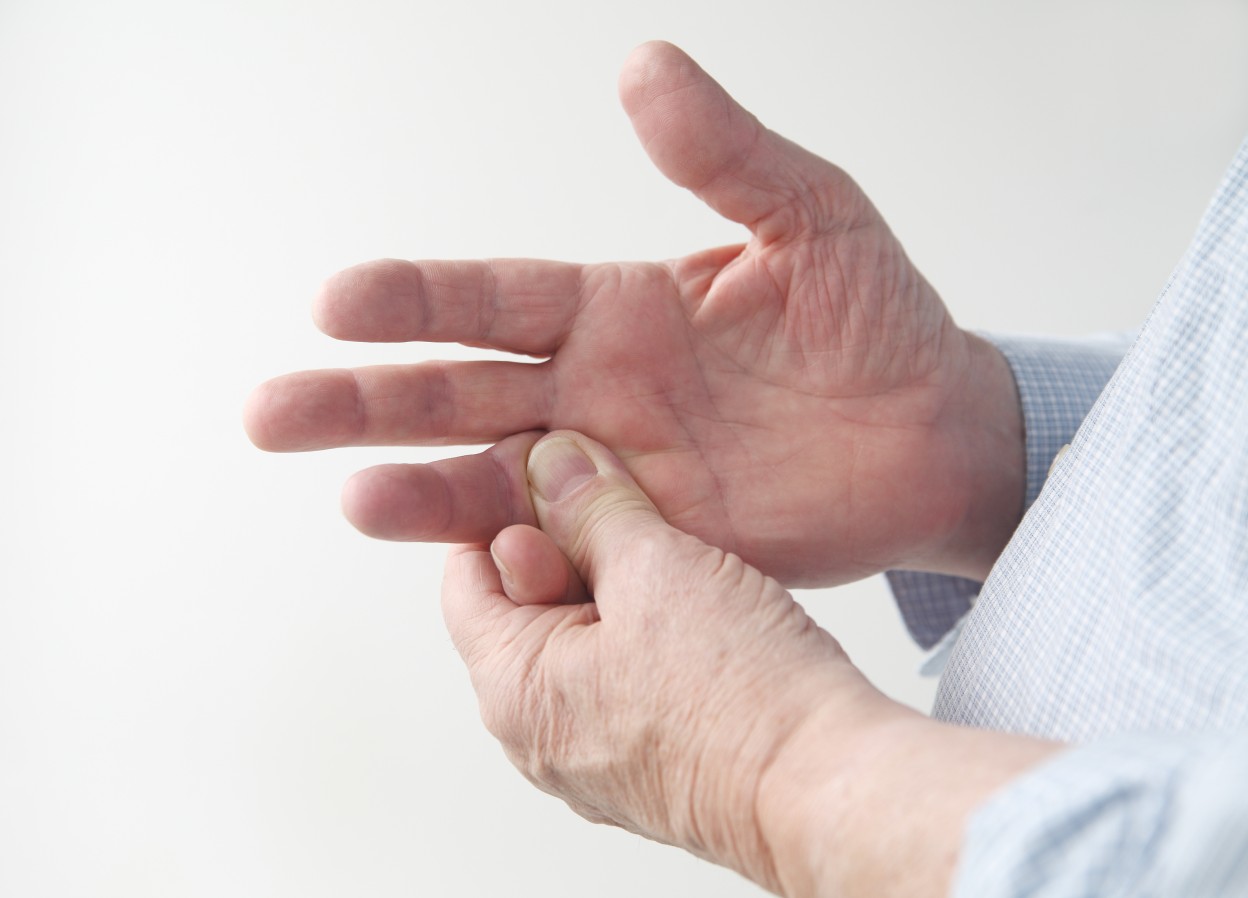Massage Therapy for Pompe Disease

If you have late-onset Pompe disease, you likely will need to see many specialists such as pulmonary physicians, cardiologists, and physiotherapists to help you manage the disorder’s different symptoms.
To help with muscle weakness and other Pompe disease-related symptoms, it also may be beneficial to add a massage therapist to the list of healthcare professionals you see.
What is Pompe disease?
Pompe disease is a rare genetic disease characterized by the abnormal buildup of a sugar molecule called glycogen inside cells. This buildup impairs the working of different organs and tissues, especially the heart, respiratory and skeletal muscles.
Muscle weakness, especially in the torso and legs, often is the first symptom of late-onset Pompe disease. Patients may develop a waddling or swaying gait and may find it difficult to stand after sitting, running, or climbing stairs.
The severity of respiratory problems due to weakness in the diaphragm and muscles between the ribs can vary greatly among patients.
What is massage therapy?
Massage therapy can enhance wellness or help manage a medical condition. Generally considered part of complementary and integrative medicine in the U.S., it’s increasingly offered along with standard treatment for a wide range of conditions.
According to the American Massage Therapy Association, 75% of respondents to a consumer survey reported that the main reason they got a massage in the past 12 months was medical or stress-related.
Massage therapy generally involves pressing, rubbing, and manipulating the skin, muscles, tendons, and ligaments. It may range from light stroking to deep pressure.
There are many different massage techniques and styles, including those that are for comfort and those for specific conditions or diseases. The types include connective tissue massage, deep tissue massage, geriatric massage, massotherapy, medical massage, reflexology, neuromuscular therapy, Swedish massage, neuropathy massage and sports massage.
How massage therapy may help you
Natural healing methods such as meditation, acupuncture, and massage may work for some people with neuromuscular diseases.
Massage therapy potentially can ease pain and muscle weakness that can put extra stress on joints, ligaments, and muscles used for breathing.
While sports massage is a well-known therapy for athletes, it also is one of the massage types that can effectively treat people with chronic conditions such as Pompe disease. Such massages can help:
- Improve circulation
- Lower blood pressure
- Enhance the immune system
- Improve muscle and joint flexibility
- Relieve muscle aches and stiffness
- Promote deeper and easier breathing
- Improve digestion and elimination
- Help relieve tension headaches
- Improve muscle tone
- Reduce swelling
Sports massage case study
A 43-year-old Pompe disease patient who was using a wheelchair and was being treated with enzyme replacement therapy (ERT) saw a sports massage therapist for the first time. He was experiencing significant fatigue (page 53 of the PDF newsletter), weakness in his chest, lower-limb cramps, and muscle tightness in his back, neck, and shoulders.
The therapist began work on the patient’s chief respiratory muscles and accessory breathing muscles of the neck and chest. He also massaged the shoulders and upper back. He then created a treatment plan of four sessions of 60–80 minutes each over two weeks. The plan intended to address other muscle groups in future sessions.
The therapist also used muscle energy techniques, a manual therapy that uses a patient’s soft muscle contractions to relax and lengthen muscles, normalize joint function, and improve range of motion.
After treatment, the patient reported his muscles were looser, less achy, and more relaxed.
Side-alternating vibration training (SAVT) case study
A 34-year-old late-onset Pompe disease patient who never used ERT and used a cane to walk was experiencing chronic weakness and fatigue, and a marked decrease in physical abilities.
After 15 weeks of SAVT, the patient’s six-minute walk distance increased 70%. Her muscle jumping power rose by 64%, and her isometric knee extensor strength increased 17%. The patient also achieved more normal use of her ankles, knees, and joints.
Who can administer massage therapy?
Caregivers may administer massage therapy, but a trained therapist can be more effective at pinpointing the proper areas and using the right amounts of pressure. What is key is understanding the patient’s pain tolerance.
In some cases, patients also may self-administer massage therapy using massage sticks or other tools. A massage therapist or physiotherapist can offer advice.
How to find a massage therapist
Ask your doctor for a recommendation. Most states regulate massage therapists through licensing, registration, or certification requirements. Don’t hesitate to ask a potential therapist about his or her qualifications and experience, and how frequent the sessions might be.
What to expect during a session
Massages may last from 10 to 90 minutes, depending on your needs. You should wear loose-fitting clothing. You typically will be on a table and covered with a sheet. It’s also possible to receive massage therapy while sitting in a chair.
The massage therapist likely will perform an evaluation through touch to locate painful or tense areas and determine how much pressure to apply. He or she will ask about your symptoms and explain what kind of massage technique they will use.
What are the risks?
Massage therapy appears to have very few serious risks if a properly trained therapist performs it. There have been, however, rare reports of serious side effects, such as a blood clot, nerve injury, or bone fracture. Elderly people may be at greater risk of injury.
You may feel a bit sore the day after a session, but a massage shouldn’t be painful or uncomfortable. If any part of the massage doesn’t feel right or is painful, let your therapist know right away.
Despite its benefits, massage is not a replacement for regular medical care. Let your doctor know you’re trying massage therapy and be sure to follow any standard treatment you’ve been prescribed.
Last updated: Dec. 8, 2020
***
Pompe Disease News is strictly a news and information website about the disease. It does not provide medical advice, diagnosis, or treatment. This content is not intended to be a substitute for professional medical advice, diagnosis, or treatment. Always seek the advice of your physician or other qualified health provider with any questions you may have regarding a medical condition. Never disregard professional medical advice or delay in seeking it because of something you have read on this website.






